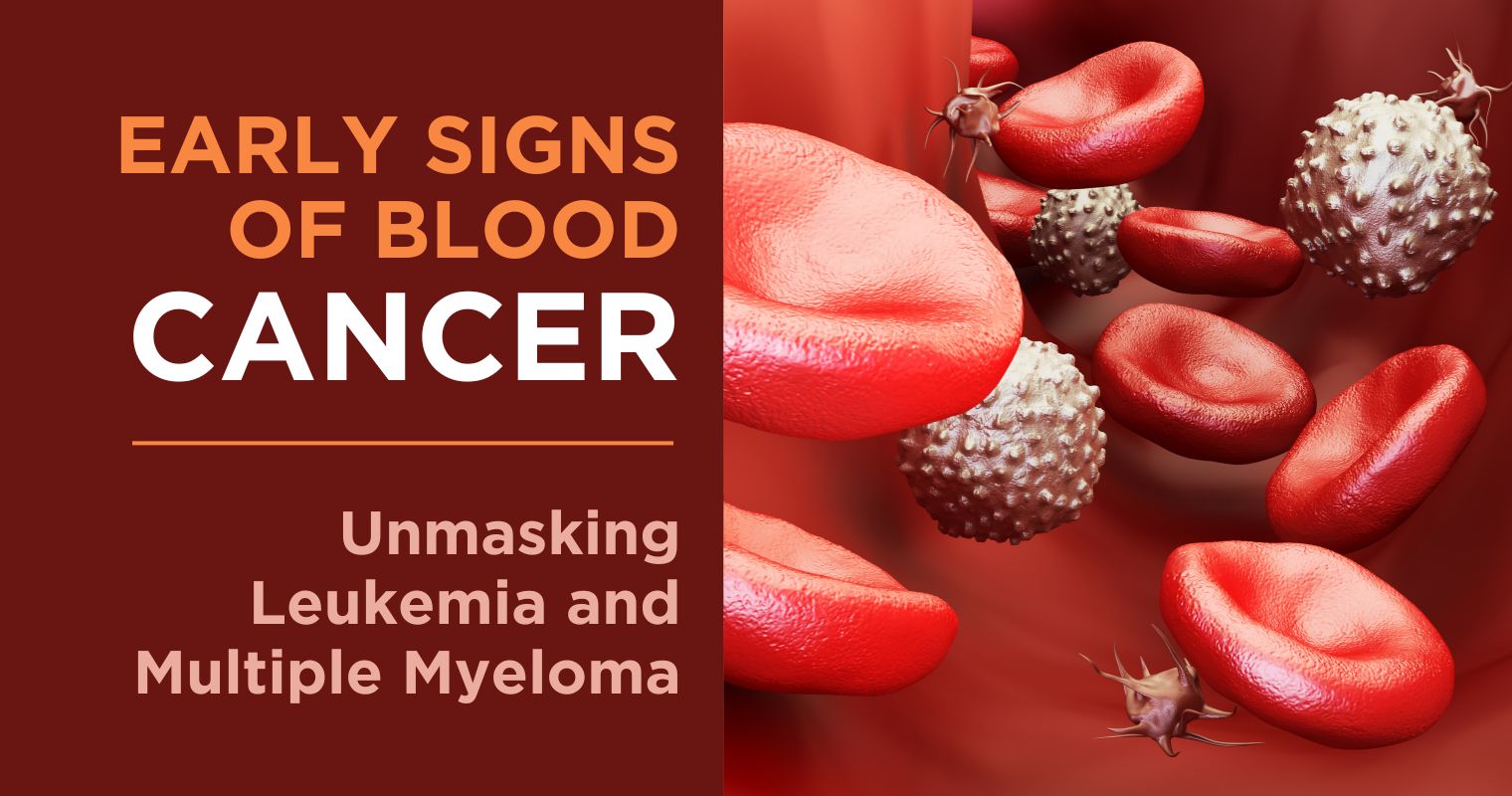Cancer is that one word that sends shivers down anyone’s spine. While there are numerous types of cancer affecting various parts of the body, blood cancers, such as leukemia and multiple myeloma, pose a unique set of challenges.
Recognizing the symptoms of these blood cancers is crucial, as early detection can make a significant difference in the prognosis and treatment outcomes.
In this blog, we will delve into the world of blood cancer symptoms, including those of leukemia and multiple myeloma. Here, we will explore the common and not-so-common blood cancer symptoms, shedding light on their potential implications.
Leukemia Symptoms
Leukemia is a type of blood cancer that primarily affects the bone marrow and blood. It is often referred to as “liquid cancer” because it involves the overproduction of immature white blood cells, which infiltrate the bloodstream. The signs of leukemia can be subtle and are often mistaken for other illnesses. Common symptoms include:
1. Fatigue: An overwhelming and persistent sense of exhaustion is a frequent complaint among leukemia patients. It can result from the body’s struggle to produce enough healthy blood cells.
2. Frequent Infections: Leukemia impairs the immune system’s ability to ward off infections, making individuals more susceptible to illnesses.
3. Bruising and Bleeding: Unexplained bruises, nosebleeds, or gum bleeding may occur due to low platelet counts, a common occurrence in leukemia.
4. Bone Pain: Many individuals with leukemia experience bone pain, which can be an early sign of the disease. This pain is often felt in the long bones of the body.
5. Swollen Lymph Nodes: Enlarged lymph nodes can be a sign of leukemia, particularly in the neck, armpits, and groin.
6. Weight Loss: Unintentional weight loss is common among leukemia patients. It can be due to the disease itself or a loss of appetite.
Leukemia Rash
In some cases of leukemia, patients may develop a peculiar symptom known as “leukemia rash.” This rash typically appears as red or purple spots on the skin and is often associated with acute myeloid leukemia (AML).
The rash occurs due to the infiltration of leukemia cells into the skin and blood vessels, leading to bleeding under the skin. If you notice unexplained rashes, it’s essential to consult a healthcare professional promptly.
Multiple Myeloma Symptoms
Multiple myeloma is another type of blood cancer that primarily affects plasma cells in the bone marrow. It often goes undiagnosed until the disease is in its advanced stages. The common symptoms of multiple myeloma include:
1. Bone Pain: Multiple myeloma frequently leads to bone pain, which can be severe and often occurs in the back, ribs, hips, and skull. These pains can be a result of bone weakening due to the disease.
2. Fatigue: As with leukemia, fatigue is a common symptom of multiple myeloma, mainly due to the decreased production of healthy blood cells.
3. Frequent Infections: Weakened immunity, a hallmark of multiple myeloma, makes individuals susceptible to infections.
4. Kidney Problems: This cancer can damage the kidneys, leading to symptoms such as increased thirst, frequent urination, and swelling in the legs and ankles.
5. Unexplained Weight Loss: Unintended weight loss is a red flag for multiple myeloma and often indicates the disease’s advanced stage.
Blood in Stool: Not Always Cancer
The presence of blood in stool is undoubtedly alarming, but it’s essential to understand that it doesn’t always signify cancer. There are various non-cancerous causes of blood in stool, such as hemorrhoids, gastrointestinal bleeding, or infections.
If you notice blood in your stool, it’s crucial not to jump to conclusions. Instead, consult a healthcare professional for a proper evaluation and diagnosis. Early detection and appropriate treatment can make a substantial difference in the outcome.
Conclusion
Blood cancers, particularly leukemia and multiple myeloma, can manifest in a variety of ways. Recognizing their symptoms is a critical step in the journey toward early diagnosis and effective treatment.
From the subtle signs of fatigue and frequent infections to the more specific symptoms like leukemia rashes and bone pain in multiple myeloma, being aware of these indications can make a significant difference in one’s prognosis.
Remember, if you experience any of these symptoms or find blood in your stool, it’s imperative to consult a healthcare professional for a thorough evaluation. Prompt diagnosis and timely treatment can be life-saving.
Additionally, don’t let fear or misconceptions cloud your judgment when it comes to symptoms like blood in stool. Not all cases point to cancer, and a proper evaluation is necessary to determine the cause.
Stay vigilant, prioritize your health, and seek medical guidance whenever you suspect something might be amiss. Blood cancer, like any other form of cancer, is best fought when detected early.

